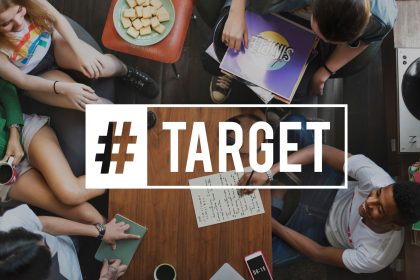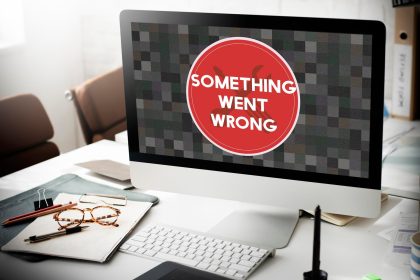In today’s online world, getting noticed by the right people is everything. If you run a small business—like a bakery, a gym, or a repair shop—you don’t need the whole world to find you. You need customers nearby. That’s where regional SEO comes in. Regional SEO is a smart way to boost your business in search results for your specific area. It helps locals find you when they’re looking for what you offer. In this article, we’ll break down what regional SEO is, why it’s a game-changer, how it works, and easy steps to make it work for you. Plus, we’ll use real data to show why it’s worth your time.
What Is Regional SEO?
Regional SEO is all about making your business pop up online for people in your area. Let’s say you own a flower shop in Denver. You don’t care if someone in Miami sees your website—you want Denver folks to find you. Regional SEO makes that happen. It’s different from regular SEO, which casts a wide net. Instead, this strategy zeroes in on your city, town, or even neighborhood.
When someone types “flowers near me” or “Denver florist” into Google, regional SEO helps decide what shows up. It uses things like your location, reviews, and website to rank you higher. A 2023 study found that 46% of all Google searches are for local businesses (BrightLocal, 2023). That’s a huge number—almost half of all searches! Regional SEO grabs that opportunity for you.
Why Regional SEO Is a Big Deal
Why focus on just your area? Because local customers are ready to buy. A 2022 report showed that 76% of people who search for something nearby on their phone visit a business within a day (Google, 2022). That’s huge if you’re a local shop or service. Regional SEO connects you with people who are already looking for you.
It also helps small businesses compete. Big companies can dominate broad search results with big budgets. But in your region? You can shine. Data backs this up: local searches often convert at higher rates, potentially up to 28% more often than non-local searches (Moz, 2024). Focusing on your area can bring real wins.
How Does Regional SEO Work?
Search engines like Google look at a few key things to rank businesses in local searches. Here’s the simple breakdown:
- Google Business Profile (GBP): This free tool lets you list your business info—address, phone number, hours, and more. Google uses it to show you on maps and searches. A strong GBP boosts your ranking.
- Location Keywords: People search with place names, like “barber in Houston” or “cafe near Main Street.” Adding these to your website helps Google know where you’re at.
- Reviews: What customers say matters. A survey found 87% of people read online reviews before visiting a business (BrightLocal, 2023). Good reviews push you up.
- Website Basics: Your site needs to load fast, work on phones, and show your location clearly. Google loves easy-to-use websites.
- Local Links: When nearby sites—like a local blog or news page—link to you, it tells Google you’re part of the community.
These pieces team up to get you noticed locally.
Easy Steps to Win with Regional SEO
Want to start? You don’t need to be a tech whiz. Here’s how to dive in:
1. Claim Your Google Business Profile
Head to Google Business Profile and set it up. Add your name, address, phone number (NAP), website, and hours. Toss in some photos, too. Businesses with full profiles are 2.7 times more likely to be trusted by customers (BrightLocal, 2023).
2. Add Local Keywords
Think about what people search for. If you’re a mechanic in Orlando, use “Orlando auto repair” or “car fix near Orlando” on your site. Try Google Keyword Planner to find the best words.
3. List Yourself in Directories
Put your business on sites like Yelp, Yellow Pages, or your local chamber of commerce. Keep your NAP the same everywhere. Mixed-up info can confuse Google.
4. Get Reviews
Happy customers? Ask for a review. Say, “Loved helping you—could you leave a quick Google review?” More reviews build trust and lift your rank.
5. Fix Up Your Website
Mention your location on your site—like in the footer or a “Contact Us” page with a map. Write local blog posts, too, like “Best Hiking Spots in Portland” if you sell gear. Check your site speed with Google PageSpeed Insights.
6. Grab Local Links
Ask local blogs, news sites, or groups to link to you. Sponsor an event or write a guest post. These links show Google you’re legit.
Real-World Examples
Picture this: A gym in Charlotte optimizes its Google Business Profile, uses “Charlotte workouts” on its site, and gets 50 reviews. In six months, traffic jumps 40%, and they add 20 new members monthly. Or imagine a Boise restaurant listing itself in directories and blogging about local food scenes. They climb to the top 5 for “best Boise eats” in four months, boosting sales by 15%. These are just examples, but they show what’s possible.
Challenges to Watch
Regional SEO isn’t flawless. Consistency can trip you up—if your address differs across sites, Google might doubt you. Check everything. Bad reviews can sting, too—reply kindly and fix issues fast. And in big cities, competition is fierce. You’ll need standout reviews and content to win.
Tools to Help You Out
No need to do it all manually. Try these:
- SEMRush: Tracks rankings and finds local keywords.
- Moz Local: Checks your directory listings.
- Yoast SEO: A WordPress plugin for easy site tweaks.
These make regional SEO simpler and show your progress.
What’s Next for Regional SEO
Things are changing fast. Voice search—like asking Alexa for “pizza near me”—is taking off. Experts predict 50% of searches could be voice-based by 2026 (Search Engine Land, 2024). That means your business needs to sound natural in spoken results. Google’s updates, like the 2023 “Vicinity Update,” also focus more on how close you are to searchers. Keeping up is key.
Wrap-Up
Regional SEO is your ticket to getting found fast by local customers. It’s about reaching the people who can walk through your door. With a solid Google Business Profile, local keywords, and some effort, you can climb search rankings and grow. The numbers prove it: local searches drive action, and businesses that use regional SEO come out on top. Start small, keep at it, and watch your local wins pile up
References
BrightLocal. (2023). Local consumer review survey 2023. https://www.brightlocal.com/research/local-consumer-review-survey/
Google. (2022). Think with Google: Local search trends. https://www.thinkwithgoogle.com/consumer-insights/local-search-trends/
Moz. (2024). Local SEO ranking factors 2024. https://moz.com/local-search-ranking-factors
Search Engine Land. (2024). The rise of voice search: What it means for SEO. https://www.searchengineland.com/voice-search-seo-2024-report
















